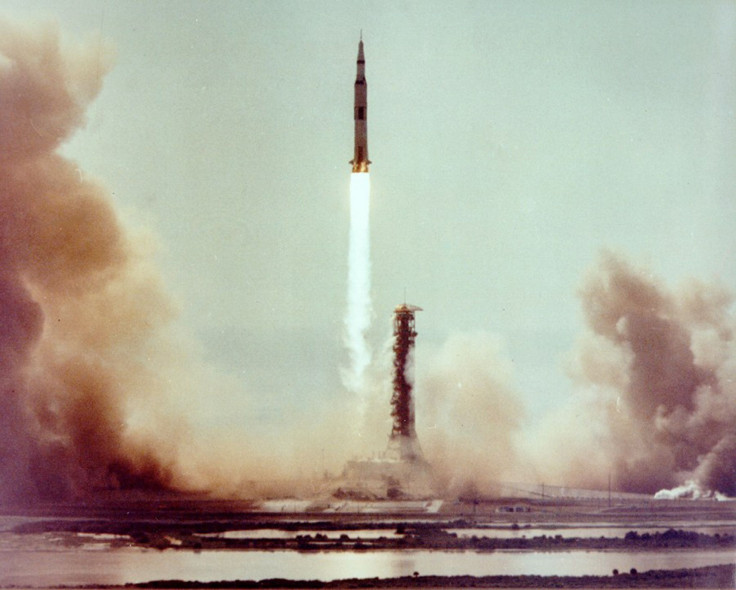Experts preserve Apollo rocket engines for public display in 2020

The historic rocket engine parts of the Apollo, which launched NASA astronauts Neil Armstrong, Buzz Aldrin and Michael Collins to the moon, are now completely being preserved by conservation experts for museum display in 2020. The Saturn V F-1 engine parts will be conserved the way it was recovered off the Atlantic Ocean floor, experts said.
In March 2012, the privately-financed effort of Amazon.com's founder and CEO Jeff Bezos organised the recovery of the Apollo artefacts after more than four decades since the engines launched the spacecraft that carried the first, second and fifth manned missions to the moon. At present, the conservation team of the Bezos Expeditions has already completed researching and stabilising the 25,000-pound or 11,340-kilogramme Saturn V F-1 engine parts, according to a report from collectSpace.
The F-1 engines sunk 14,000 feet or 4,300 metres below the Atlantic Ocean surface after accelerating the Saturn V to more than 6,000 mph and pushing the rocket to more than 40 miles high. The impact with the ocean ripped the F-1 engines apart like tin cans.
However, “all of the major artefacts in the collection are complete” for preservation process, Jim Remar, the Cosmosphere International SciEd Center and Space Museum president and chief operating officer, told collectSPACE in an interview on Monday. He added that the team members are now working on some small unassigned parts of the engines. The conservation team at Cosmosphere said that instead of restoring and reassembling the F-1 engines to their original launch condition, the parts will be conserved the way F-1 was discovered off the ocean.
"With this project, we truly wanted to preserve the artefacts as they were when they were recovered off the bottom of the Atlantic," Remar stated. He added, "The artefacts have a story and life. We didn't want to do anything that changed their look or appearance because we felt that would take away some of the story."
However, though the team is trying not to change any of the components, the Cosmosphere wants to ensure that the artefacts would survive on display. The conservators have modified the appearance of the engine parts as they needed to remove the corrosion on the exterior of the parts.
"We did not want to try to remove every last stain or every last appearance of rust and we wanted to try to keep the colour as original to when they were found as possible. But there is differently a difference," Remar explained.
In their effort to keep the history of the engines, the preservation team also found more of its history while stabilising the engine parts. The Cosmosphere's team discovered markings in the parts tied to the mission identification of flights Apollo 11 and Apollo 12 in 1969 and to Apollo 16 in 1972.
The team were able to identify part numbers and serial numbers during the treatment process of preservation. "There was a stencil painted on one of the Apollo 12 thrust chambers that was still visible, so we were able to identify that via the stencil. But other components were [discerned by] finding the part number and serial number," Remar said.
The conservators of Bezos Expeditions are working on the recovered F-1 engine components including a thrust chamber, a liquid oxygen (LOX) dome and injector plate, a turbo pump and a heat exchanger from Apollo 11, that landed Neil Armstrong and Buzz Aldrin on the moon. The team also found two thrust chambers and a LOX dome with an injector plate from Apollo 12 and a heat exchanger, a turbine and inlet manifold from Apollo 16.
The Smithsonian Institution, the world’s largest museum and research complex, plans to exhibit the engine parts in the new gallery, "Destination Moon," is set to open in the United States in 2020. However, the artefacts will not be shipped to Washington until at least 2019, the celebration of the 50th anniversary of the Apollo 11 mission.
Contact the writer at feedback@ibtimes.com.au, or let us know what you think below.





















